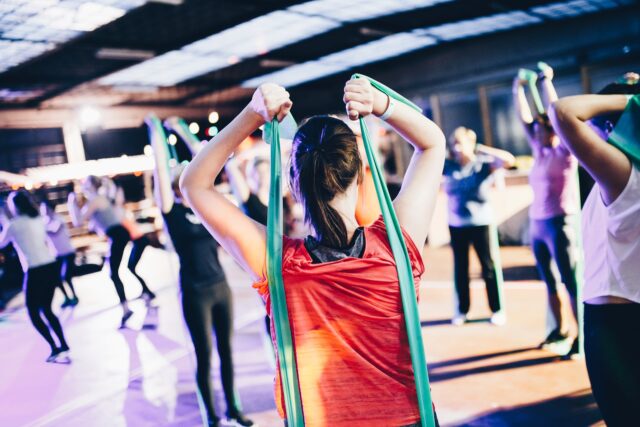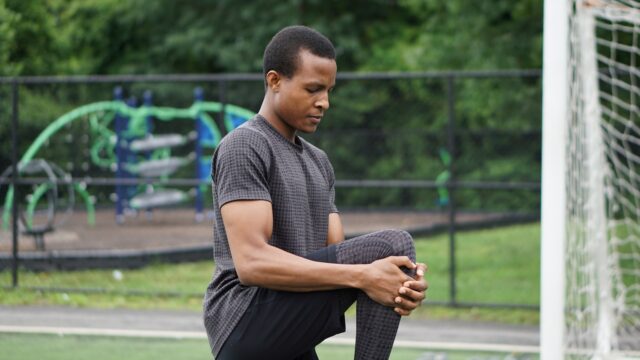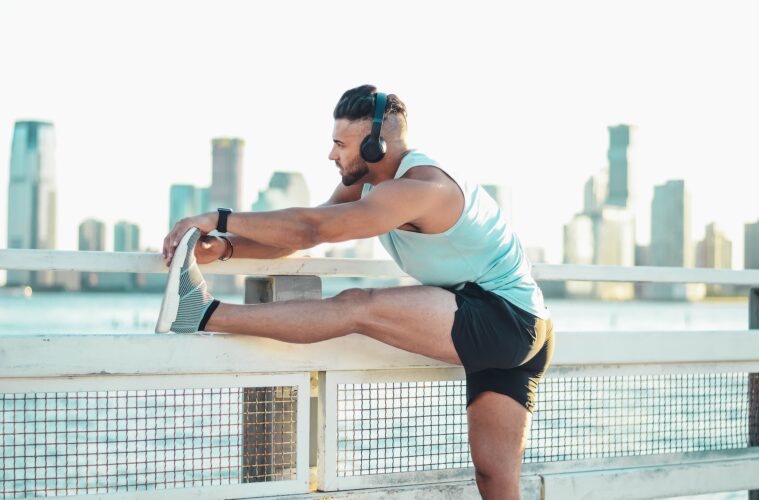Do you ever feel like your muscles are just too tight? You’re not alone. We all have experienced muscle tightness at one point or another. But what exactly is muscle tightness and why does it happen? In this blog post, we’ll explore the benefits of stretching, the different types of stretching, when to stretch, and tips for maximising the effects of stretching. So you can keep your muscles feeling healthy and happy. Let’s get started!
Stretching helps to keep the body healthy and functioning properly by improving flexibility, and range of motion, and reducing the chance of injury from everyday activities. Stretching involves lengthening a muscle or group of muscles in order to increase its elasticity. Stretching before and after exercise is essential because it increases blood flow to muscles, relaxes tightened muscles, minimises soreness, and prepares the body for physical activity.
Regular stretching can also help improve mental health by decreasing stress levels, increasing energy levels, and boosting self-confidence. Whether you are a beginner or an experienced athlete, stretching should be part of your daily routine since flexible muscles are essential for optimised performance in any sport or even just everyday life!
Benefits of Stretching and Reducing Muscle Tightness
Stretching is a simple yet powerful activity that often gets overlooked in the world of fitness. It’s an activity that we have all done at some point in our lives, whether we were stretching before a sports game or just waking up in the morning. Unfortunately, people often overlook the significance of stretching in terms of wellness and physical fitness.
Stretching is not just about feeling good and relaxing your muscles. It has a multitude of benefits for your body, including:
- Improved Flexibility – Stretching is a great way to increase your range of motion and flexibility, enabling you to reach higher levels of athletic performance. In addition, it reduces the risk of injury while improving your posture over time.
- Reduced Risk of Injury – When you stretch, you help to increase blood flow to your muscles, which can reduce the risk of injury. It also helps to prevent muscle imbalances, which can lead to injury.
- Improved Posture – Eliminating muscle tension through stretching can do wonders for your posture and ultimately help to relieve any backaches, neck pains or other body discomforts associated with an unhealthy stance.
- Reduced Stress and Improved Relaxation – Taking time to stretch can be an ideal way to reduce stress and trigger relaxation. Stretching has been proven to lower tension, erase anxiety, and boost your wellbeing as a whole.
- Improved Athletic Performance – When you stretch regularly, you can improve your athletic performance by increasing your range of motion and flexibility. This can help you to perform better in sports and other physical activities.

Muscle Tightness
Types of Stretching
There are several different types of stretching that you can do, each with its benefits. These include:
- Dynamic Stretching – By engaging in dynamic stretching, you are able to actively move your body through a wide range of motion. This can be done with exercises like lunges or arm circles. Dynamic stretching is great for warming up before exercise, as it helps to increase blood flow to your muscles and prepare them for activity.
- Static Stretching – Static stretching involves holding a stretch for a period of time, usually around 30 seconds. This is a great way to improve your flexibility and reduce the risk of injury. It’s best to do static stretching after exercise when your muscles are warm.
- PNF Stretching – PNF stretching involves contracting and relaxing your muscles while stretching. This can help to improve your range of motion and flexibility, as well as reduce the risk of injury.
- Proprioceptive Neuromuscular Facilitation Stretching – Proprioceptive Neuromuscular Facilitation (PNF) stretching involves contracting and relaxing your muscles while stretching. This can help to improve your range of motion and flexibility, as well as reduce the risk of injury.
When to Stretch
Stretching can be done at any time, but there are some times when it’s more effective. These include:
- Before Exercise – Dynamic stretching is a great way to warm up before exercise. It helps to increase blood flow to your muscles and prepare them for activity.
- After Exercise – Static stretching is best done after exercise when your muscles are warm. This can help to improve your flexibility and reduce the risk of injury.
- In the Morning – Stretching in the morning can help to wake up your muscles and prepare your body for the day ahead.
- Before Bedtime – Stretching before bedtime can be a great way to relax your muscles and improve your overall sense of well-being.

Muscle Tightness
Tips for Maximising the Effects of Stretching
To maximise the effects of stretching, it’s important to follow some basic guidelines:
- Start Slowly and Gradually Increase Intensity – Don’t push yourself too hard when you’re starting out with stretching. Start with simple stretches and gradually increase the intensity over time.
- Focus on Proper Technique – Make sure you’re using the proper technique when you’re stretching. This will help you to avoid injury and get the most benefit from each stretch.
- Hold Each Stretch for an Adequate Amount of Time – When you’re holding a stretch, make sure you hold it for at least 30 seconds. This will help to improve your flexibility and reduce the risk of injury.
- Breathe Deeply and Slowly – When you’re stretching, make sure you breathe deeply and slowly. This will help to relax your muscles and improve your overall sense of well-being.
- Stay Hydrated – It’s important to stay hydrated when you’re stretching. Make sure you drink plenty of water before and after your stretching sessions.
Stretching is a simple yet powerful activity that can have a big impact on your overall health and fitness. It’s important to make stretching a regular part of your fitness routine, as it can help to improve your flexibility, reduce the risk of injury, and improve your overall sense of well-being. By following these tips and guidelines, you can maximise the effects of stretching and get the most benefit from this important activity.
So, start stretching today and feel the benefits for yourself!





